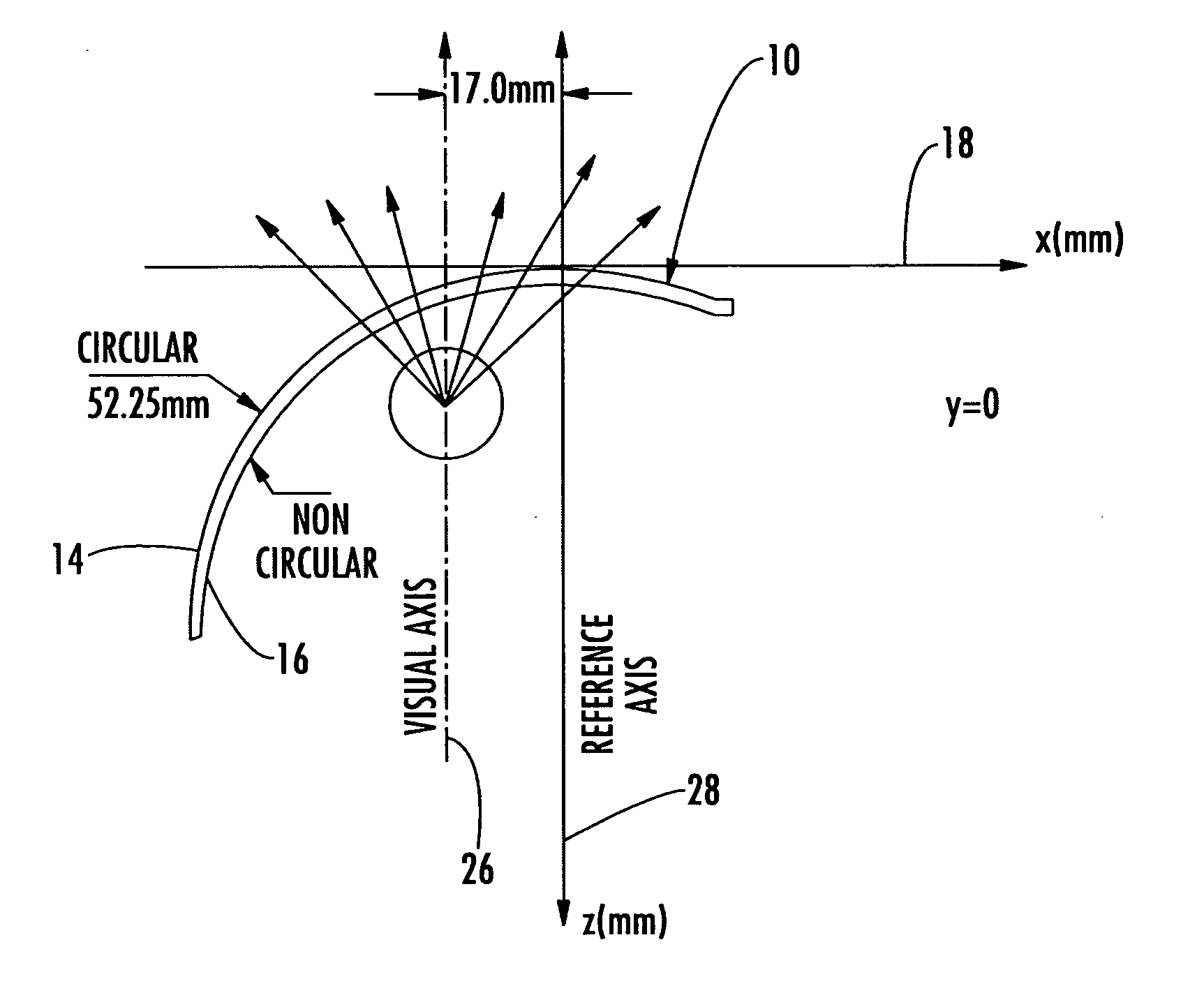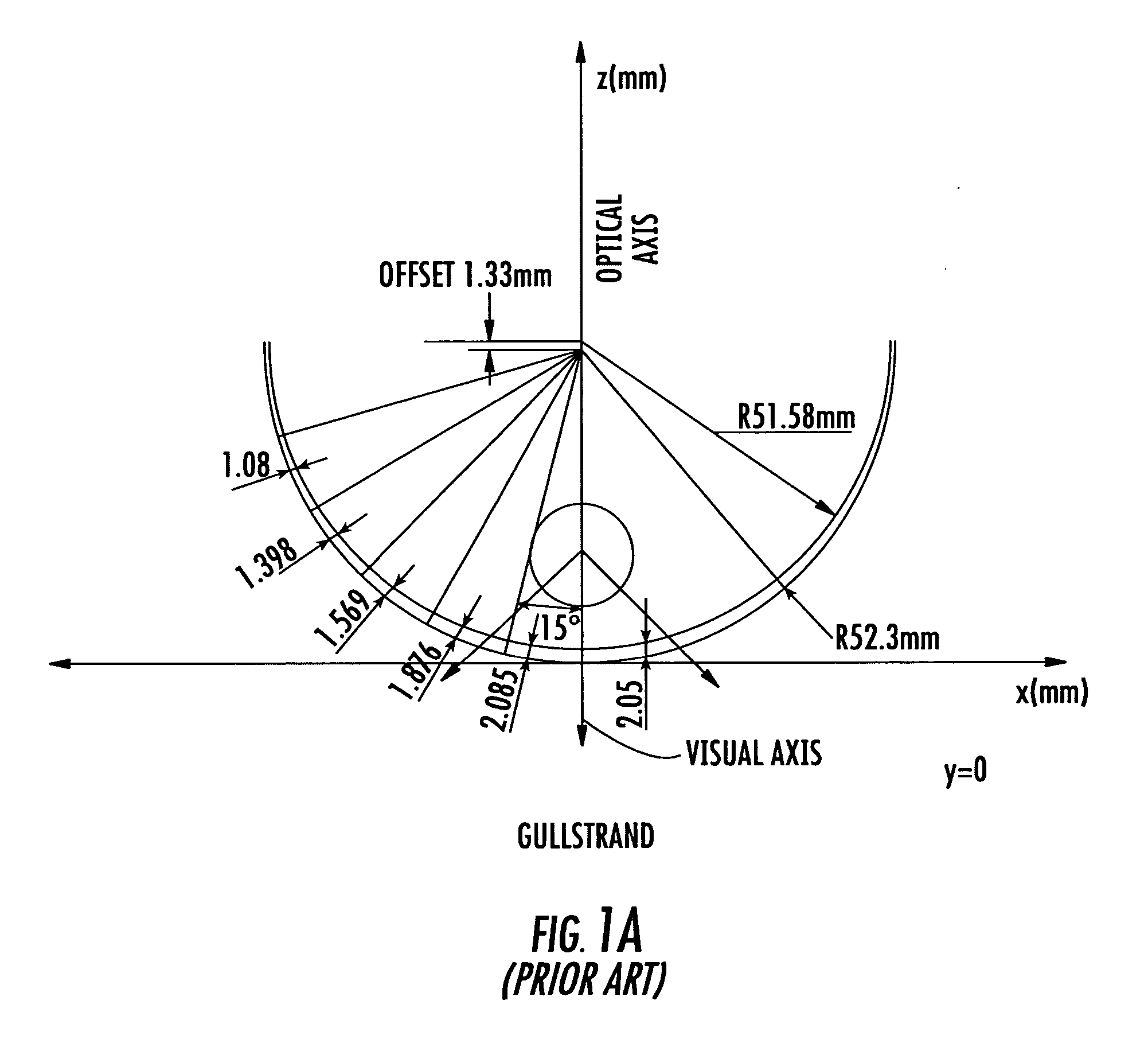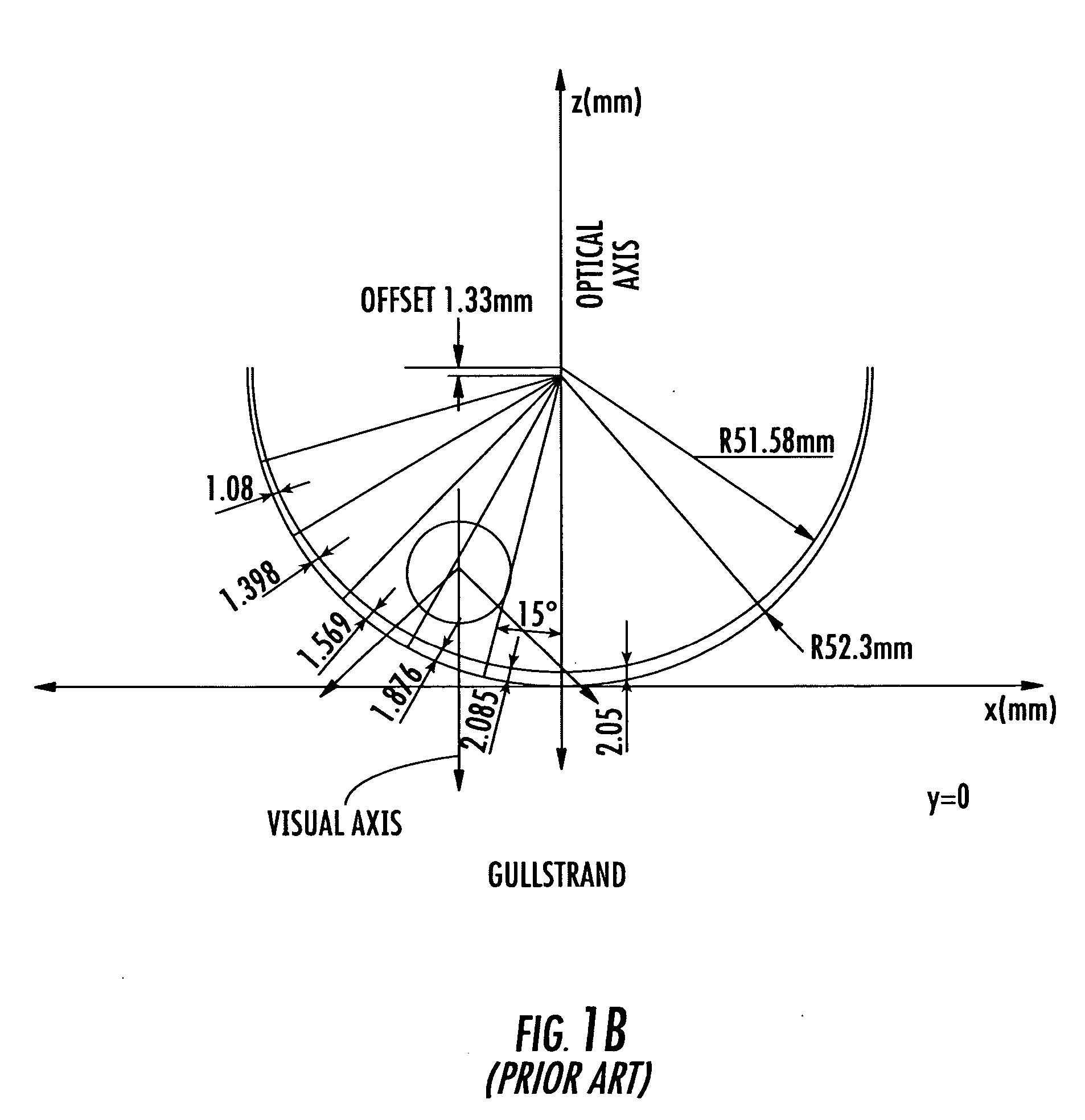Non-corrective lenses with improved peripheral vision
- Summary
- Abstract
- Description
- Claims
- Application Information
AI Technical Summary
Benefits of technology
Problems solved by technology
Method used
Image
Examples
Embodiment Construction
[0036] Referring now to the drawings, the lens of the instant invention is illustrated and generally indicated at 10 in FIGS. 2-6. As will hereinafter be more fully described, the instant invention aims to improve peripheral vision in the case of spherical lenses, cylindrical and toric lenses, and as an extension of the invention may be applied to any shape (free form).
[0037] The lenses described herein are intended to be non-corrective lenses, and thus have no optical power (0 Diopter). The lenses described herein are further intended for primary use as sun lenses and / or safety lenses in dual lens eyewear. However, use is also contemplated in single lens shield-type eyewear as illustrated in FIGS. 9 and 10.
[0038] Referring to FIGS. 2-6, the lens 10 is initially formed as a rectangular blank, and then a lens element 12 (shown in broken line) is trimmed from the blank by the glass maker. The lens 10 has an outer convex surface 14, and an inner concave surface 16. The lens 10 as des...
PUM
 Login to View More
Login to View More Abstract
Description
Claims
Application Information
 Login to View More
Login to View More - R&D
- Intellectual Property
- Life Sciences
- Materials
- Tech Scout
- Unparalleled Data Quality
- Higher Quality Content
- 60% Fewer Hallucinations
Browse by: Latest US Patents, China's latest patents, Technical Efficacy Thesaurus, Application Domain, Technology Topic, Popular Technical Reports.
© 2025 PatSnap. All rights reserved.Legal|Privacy policy|Modern Slavery Act Transparency Statement|Sitemap|About US| Contact US: help@patsnap.com



